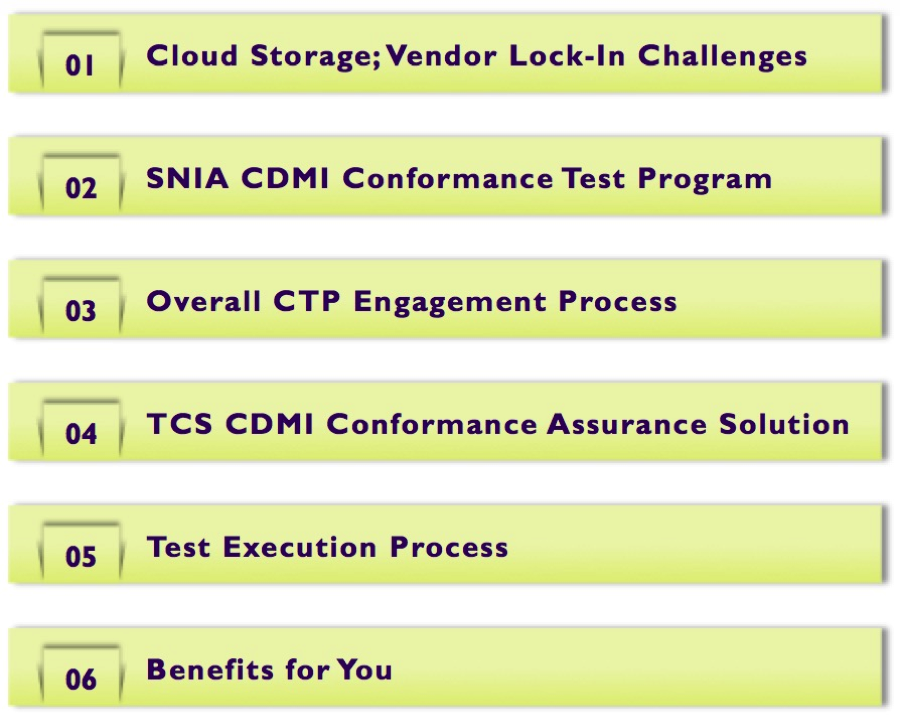What’s going on in the world of cloud standards? Since the initial publication of the National Institute of Standards and Technology (NIST) definition of cloud computing in NIST SP 800-145 in 2011, international standards development organizations (SDOs) have sought to refine and expand the cloud computing landscape. On February 13, 2020 at our next live SNIA Cloud Storage Technologies Initiative webcast “Cloud Standards: What They Are, Why You Should Care” we will dive into the cloud standards worth noting as Eric Hibbard, standards expert and ISO editor, will discuss:
Read MoreTag: Cloud Standards
Security and Privacy in the Cloud
When it comes to the cloud, security is always a topic for discussion. Standards organizations like SNIA are in the vanguard of describing cloud concepts and usage, and (as you might expect) are leading on how and where security fits in this new world of dispersed and publicly stored and managed data. On July 20th, the SNIA Cloud Storage Initiative is hosting a live webcast “The State of Cloud Security.” In this webcast, I will be joined by SNIA experts Eric Hibbard and Mark Carlson who will take us through a discussion of existing cloud and emerging technologies, such as the Internet of Things (IoT), Analytics & Big Data, and more, and explain how we’re describing and solving the significant security concerns these technologies are creating. They will discuss emerging ISO/IEC standards, SLA frameworks and security and privacy certifications. This webcast will be of interest to managers and acquirers of cloud storage (whether internal or external), and developers of private and public cloud solutions who want to know more about security and privacy in the cloud.
Topics covered will include:
- Summary of the standards developing organization (SDO) activities:
- Work on cloud concepts, Cloud Data Management Interface (CDMI), an SLA framework, and cloud security and privacy
- Securing the Cloud Supply Chain:
- Outsourcing and cloud security, Cloud Certifications (FedRAMP, CSA STAR)
- Emerging & Related Technologies:
- Virtualization/Containers, Federation, Big Data/Analytics in the Cloud, IoT and the Cloud
Register today. We hope to see you on July 20th where Eric, Mark and I will be ready to answer your cloud security questions.
Learn How to Develop Interoperable Cloud Encryption and Access Control
SNIA Cloud is hosting a live webcast on December 20th, “Developing Interoperable Cloud Encryption and Access Control,” to discuss and demonstrate encrypted objects and delegated access control. For the data protection needs of sharing health and other data across different cloud services, this webcast will explore the capabilities of the Cloud Data Management Interface (CDMI) in addressing these requirements and show implementations of CDMI extensions for a health care example.
See it in action! This webcast will include a demonstration by Peter van Liesdonk of Philips who will share the results of testing at the SDC 2016 Cloud Plugfest for Encrypted Objects and Delegated Access Control extensions to CDMI 1.1.1.
You’ll will see and learn:
- New CDMI features (Encrypted Objects and Delegated Access Control)
- Implementation experiences with new features
- A live demo of a healthcare-based example
Register today. My colleagues, Peter van Liesdonk, David Slik and I will be on-hand to answer any questions you may have. We hope to see you there.
Cloud Storage: Solving Interoperability Challenges
Cloud storage has transformed the storage industry, however interoperability challenges that were overlooked during the initial stages of growth are now emerging as front and center issues. I hope you will join us on July 19th for our live Webcast, “Cloud Storage: Solving Interoperability Challenges,” to learn the major challenges facing the use of businesses services from multiple cloud providers and moving data from one cloud provider to another.

We’ll discuss how the SNIA Cloud Data Management Interface standard (CDMI) addresses these challenges by offering data and metadata portability between clouds and explain how the SNIA CDMI Conformance Test Program helps cloud storage providers achieve CDMI conformance.
Join us on July 19th to learn:
- Critical challenges that the cloud storage industry is facing
- Issues in a multi-cloud API environment
- Addressing cloud storage interoperability challenges
- How the CDMI standard works
- Benefits of CDMI conformance testing
- Benefits for end user companies
You can register today. We look forward to seeing you on July 19th.
Moving Data Protection to the Cloud: Key Considerations
Leveraging the cloud for data protection can be an advantageous and viable option for many organizations, but first you must understand the pros and cons of different approaches. Join us on Nov. 17th for our live Webcast, “Moving Data Protection to the Cloud: Trends, Challenges and Strategies” where we’ll discuss the experiences of others with advice on how to avoid the pitfalls, especially during the transition from strictly local resources to cloud resources. We’ve pulled together a unique panel of SNIA experts as well as perspectives from some leading vendor experts Acronis, Asigra and SolidFire who’ll discuss and debate:
- Critical cloud data protection challenges
- How to use the cloud for data protection
- Pros and cons of various cloud data protection strategies
- Experiences of others to avoid common pitfalls
- Cloud standards in use – and why you need them
Register now for this live and interactive event. Our entire panel will be available to answer your questions. I hope you’ll join us!
LTFS Bulk Transfer Standard Q&A
Our recent live SNIA Cloud Webcast “LTFS Bulk Transfer Standard” is now available on-demand. Thanks to all the folks who attended the live event. We did not have time to address all of the questions, so here are answers to them. If you think of additional questions, please feel free to comment on this blog.
Q. The LTFS standard seems to support shared extents between files, and by extension, deduplicated files. Is this a correct assessment, and how does it play in the bulk transfer standard?
A. The LTFS Bulk Transfer Standard supports shared extents as supported by the LTFS standard, which can transparently reduce space used by having multiple references to common data stored on tape (deduplication). This typically happens below the bulk transfer layer, by the software used to read and write the LTFS volumes. At this point, few software packages support this feature due to the wear and latency consequences of read seeks resulting from using this feature.
Q. What is the state of the standard in its lifecycle? (e.g., working group draft, public review, published, etc.)
A. The LTFS standard has been around for some time; more information can be found here at http://www.snia.org/tech_activities/standards/curr_standards/ltfs. The LTFS Bulk Transfer Standard is here at http://www.snia.org/tech_activities/publicreview#ltfsbulk, and is in public review.
Q. The standard seems to be based on the idea of moving physical tapes to the cloud. Is there a definition of a virtual LTFS image that can be moved between systems over the network?
A. Not yet, but that is a great idea we’ll be taking forward in the next versions of the proposal.
Q. One of the barriers to greater use of LTFS in the Cloud is the relative lack of enterprise grade management software that ensures that the tape media is refreshed / upgraded as it ages, that its integrity is periodically checked, that reclamation and compaction is done. It needs open standards for support in standard volume management systems as well. Until these things are in place, LTFS will be interesting largely to specialized industries like film/entertainment, seismic, and bulk transfer & bulk storage — but not about the steady-state use of tape as a true additional layer of the cloud storage hierarchy. Tape with LTFS plus proper management could fill this role — but not until the full lifecycle tape management is available and integrated.
A. The management that is always required for a physical product with a well-defined and finite lifetime is not a unique requirement of LTFS. Tape has a long history of use as a backup and archive medium, and there are a number of tape management products that are commercially available from LTO tape suppliers and independent software companies, as well as open source products. A Google search for “tape management software” will provide you with a number of alternative solutions.
Q. Do you have a list or people that sell LTFS based solutions?
A. No we don’t, but it’s a very good idea, and we’ll investigate it further.
New SNIA-CSI Webcast: LTFS Bulk Transfer Standard
Mark your calendar for February 10th as we conclude our Cloud Developer’s series by hosting a live Webcast on the LTFS Bulk Transfer Standard. LTFS (Linear Tape File System) technology provides compelling economics for bulk transportation of data between enterprise cloud storage.
This Webcast will provide an update on the joint work of the LTFS and Cloud Technical Working Groups on a bulk transfer standard that uses LTFS to allow for the reliable movement of bulk data in and out of the cloud, and mechanisms for verification, error handling and the management of namespaces. Register now to hear David Slik, Co-Chair of the SNIA Cloud Storage Technical Work Group, discuss:
- LTFS standard mandate and history
- LTFS adoption and use cases
- LTFS bulk transfer to, from, and between clouds
- Error handling and recovery
- Security considerations
I’ll be hosting the event, taking your questions, and hopefully shedding some light on the importance of this standard. I hope you’ll join us.
What’s New in the CDMI 1.1 Cloud Storage Standard
On December 2, 2014, the CSI is hosting a Developer Tutorial Webcast “Introducing CDMI 1.1” to dive into all the capabilities of CDMI 1.1.
Register now to join David Slik, Co-Chair, SNIA Cloud Storage Technical Work Group and me, Alex McDonald, as we’ll explore what’s in this major new release of the CDMI standard, with highlights on what you need to know when moving from CDMI 1.0.2 to CDMI 1.1.
The latest release – CDMI 1.1 — includes:
- Enabling support for other popular industry supported cloud storage protocols such as OpenStack Swift and Amazon S3
- A variety of extensions, some part of the core specification and some stand-alone, that include a CIMI standard extension, support for immediate queries , an LTFS Export extension, an OVF extension, along with multi-part MIME and versioning extensions. A full list can be found here.
- 100% backwards compatibility with ISO certified CDMI v. 1.0.2 to ensure continuity and backward compatibility with existing CDMI systems
- And more
This event on December 2nd will be live, so please bring your specific questions. We’ll do our best to answer them on the spot. I hope you’ll join us!
Join SNIA-CSI at the OpenStack Summit
Get the tips needed when implementing multiple cloud storage APIs. The SNIA Cloud Storage Initiative (CSI) is hosting a Birds of a Feather session – Tips to Implementing Multiple Cloud Storage APIs at the OpenStack Summit in Paris on November 5th at 9:00 a.m. Room 212/213.
There are three main object storage APIs today; OpenStack’s Swift (open but not standardized), Amazon’s S3 (proprietary yet a defacto standard) and SNIA’s CDMI (an ISO standard). With three APIs to support, it might sound expensive or difficult to support all of them, yet not doing so could be costly when customers want innovation and industry standard solutions and interoperability in your product.
What about the similarities and differences between the APIs, and can they be reconciled? Can these APIs be effectively and efficiently implemented in a single product? I hope you’ll join us at this session to learn about and discuss various ways to cope with this situation. You will discover best practices and tips on how to implement these three protocols in your cloud storage solution.
Register now. I look forward to seeing you on November 5th at the OpenStack Summit.
